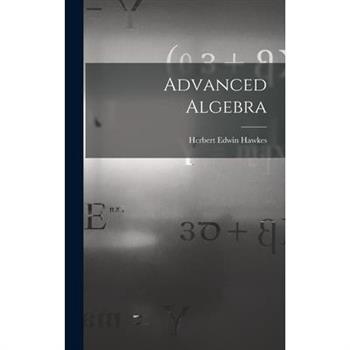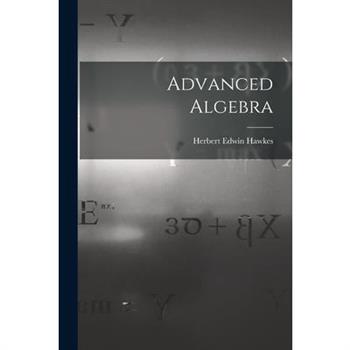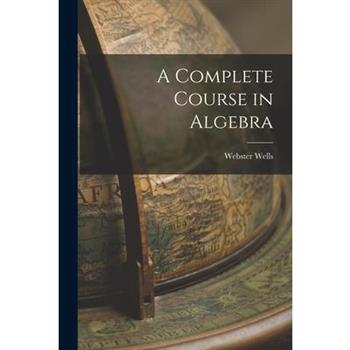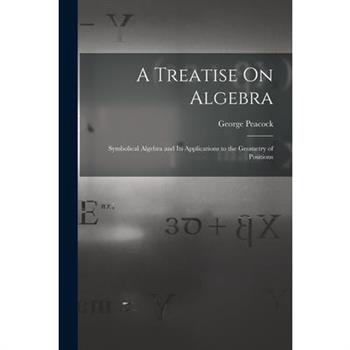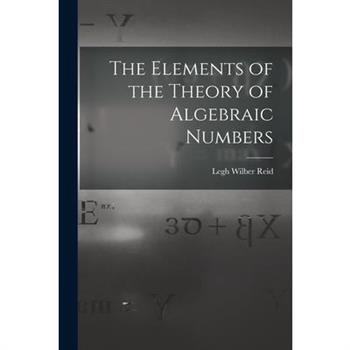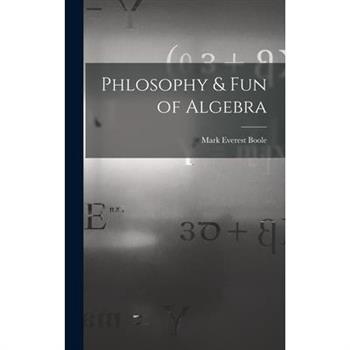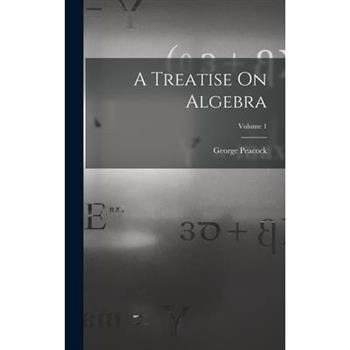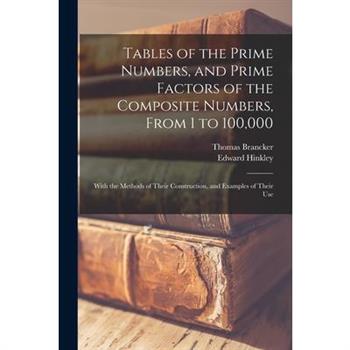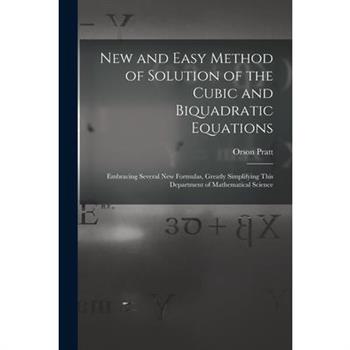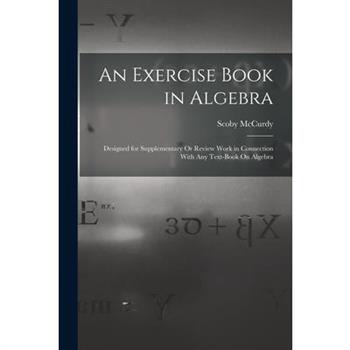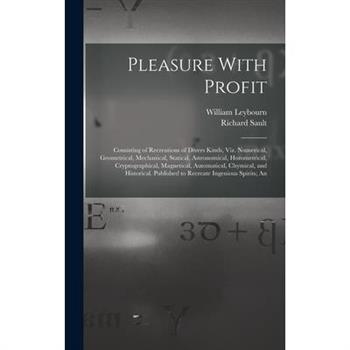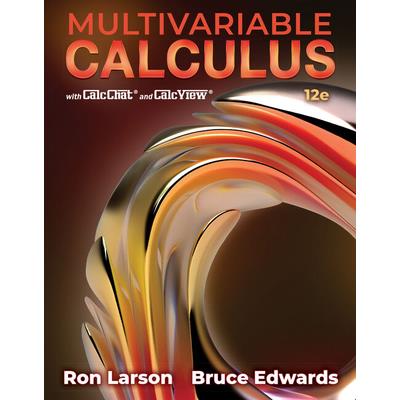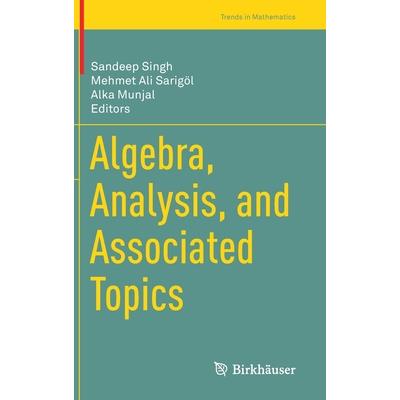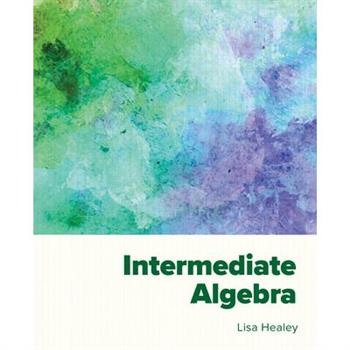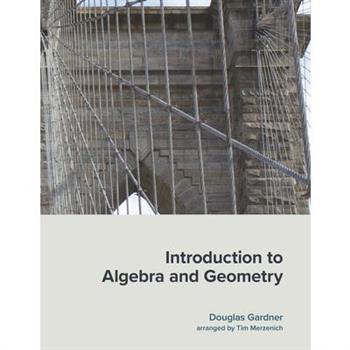Advanced Algebra
This work has been selected by scholars as being culturally important, and is part of the knowledge base of civilization as we know it.This work is in the "public domain in the United States of America, and possibly other nations. Within the United States, you may freely copy and distribute this work, as no entity (individual or corporate) has a copyright on the body of the work.Scholars believe, and we concur, that this work is important enough to be preserved, reproduced, and made generally available to the public. We appreciate your support of the preservation process, and thank you for being an important part of keeping this knowledge alive and relevant.
A Complete Course in Algebra
This work has been selected by scholars as being culturally important, and is part of the knowledge base of civilization as we know it.This work is in the "public domain in the United States of America, and possibly other nations. Within the United States, you may freely copy and distribute this work, as no entity (individual or corporate) has a copyright on the body of the work.Scholars believe, and we concur, that this work is important enough to be preserved, reproduced, and made generally available to the public. We appreciate your support of the preservation process, and thank you for being an important part of keeping this knowledge alive and relevant.
Lectures on Fundamental Concepts of Algebra and Geometry
This work has been selected by scholars as being culturally important, and is part of the knowledge base of civilization as we know it.This work is in the "public domain in the United States of America, and possibly other nations. Within the United States, you may freely copy and distribute this work, as no entity (individual or corporate) has a copyright on the body of the work.Scholars believe, and we concur, that this work is important enough to be preserved, reproduced, and made generally available to the public. We appreciate your support of the preservation process, and thank you for being an important part of keeping this knowledge alive and relevant.
Groups and Symmetry
This textbook provides a readable account of the examples and fundamental results of groups from a theoretical and geometrical point of view. This is the second book of the set of two books on groups theory. Topics on linear transformation and linear groups, group actions on sets, Sylow's theorem, simple groups, products of groups, normal series, free groups, platonic solids, Frieze and wallpaper symmetry groups and characters of groups have been discussed in depth. Covering all major topics, this book is targeted to advanced undergraduate students of mathematics with no prerequisite knowledge of the discussed topics. Each section ends with a set of worked-out problems and supplementary exercises to challenge the knowledge and ability of the reader.
Algebra
This work has been selected by scholars as being culturally important, and is part of the knowledge base of civilization as we know it.This work is in the "public domain in the United States of America, and possibly other nations. Within the United States, you may freely copy and distribute this work, as no entity (individual or corporate) has a copyright on the body of the work.Scholars believe, and we concur, that this work is important enough to be preserved, reproduced, and made generally available to the public. We appreciate your support of the preservation process, and thank you for being an important part of keeping this knowledge alive and relevant.
Making Musical Time
This book is a comprehensive examination of the conception, perception, performance, and composition of time in music across time and culture. It surveys the literature of time in mathematics, philosophy, psychology, music theory, and somatic studies (medicine and disability studies) and looks ahead through original research in performance, composition, psychology, and education. It is the first monograph solely devoted to the theory of construction of musical time since Kramer in 1988, with new insights, mathematical precision, and an expansive global and historical context.The mathematical methods applied for the construction of musical time are totally new. They relate to category theory (projective limits) and the mathematical theory of gestures. These methods and results extend the music theory of time but also apply to the applied performative understanding of making music. In addition, it is the very first approach to a constructive theory of time, deduced from the recent theory of musical gestures and their categories.Making Musical Time is intended for a wide audience of scholars with interest in music. These include mathematicians, music theorists, (ethno)musicologists, music psychologists / educators / therapists, music performers, philosophers of music, audiologists, and acousticians.
Elements of Algebra
This work has been selected by scholars as being culturally important, and is part of the knowledge base of civilization as we know it.This work is in the "public domain in the United States of America, and possibly other nations. Within the United States, you may freely copy and distribute this work, as no entity (individual or corporate) has a copyright on the body of the work.Scholars believe, and we concur, that this work is important enough to be preserved, reproduced, and made generally available to the public. We appreciate your support of the preservation process, and thank you for being an important part of keeping this knowledge alive and relevant.
Beginners' Algebra
This work has been selected by scholars as being culturally important, and is part of the knowledge base of civilization as we know it.This work is in the "public domain in the United States of America, and possibly other nations. Within the United States, you may freely copy and distribute this work, as no entity (individual or corporate) has a copyright on the body of the work.Scholars believe, and we concur, that this work is important enough to be preserved, reproduced, and made generally available to the public. We appreciate your support of the preservation process, and thank you for being an important part of keeping this knowledge alive and relevant.
The Elements of the Theory of Algebraic Numbers
This work has been selected by scholars as being culturally important, and is part of the knowledge base of civilization as we know it.This work is in the "public domain in the United States of America, and possibly other nations. Within the United States, you may freely copy and distribute this work, as no entity (individual or corporate) has a copyright on the body of the work.Scholars believe, and we concur, that this work is important enough to be preserved, reproduced, and made generally available to the public. We appreciate your support of the preservation process, and thank you for being an important part of keeping this knowledge alive and relevant.
Phlosophy & fun of Algebra
This work has been selected by scholars as being culturally important, and is part of the knowledge base of civilization as we know it.This work is in the "public domain in the United States of America, and possibly other nations. Within the United States, you may freely copy and distribute this work, as no entity (individual or corporate) has a copyright on the body of the work.Scholars believe, and we concur, that this work is important enough to be preserved, reproduced, and made generally available to the public. We appreciate your support of the preservation process, and thank you for being an important part of keeping this knowledge alive and relevant.
The Collected Mathematical Papers
This work has been selected by scholars as being culturally important, and is part of the knowledge base of civilization as we know it.This work is in the "public domain in the United States of America, and possibly other nations. Within the United States, you may freely copy and distribute this work, as no entity (individual or corporate) has a copyright on the body of the work.Scholars believe, and we concur, that this work is important enough to be preserved, reproduced, and made generally available to the public. We appreciate your support of the preservation process, and thank you for being an important part of keeping this knowledge alive and relevant.
A First Course in Group Theory
Preliminaries Notions.- Symmetries of Shapes.- Binary Operations.- Cyclic Groups.- Inverse Functions and Permutations.- Group of Arithmetical Functions.- Matrix Groups.- Translation and Scaling Matrices.- Cosets of Subgroups and Lagrange's Theorem.- Normal Subgroups and Factor Groups.- Some Special Subgroups.- Commutators and Derived Subgroups.- Maximal Subgroups.- Group Homomorphisms.- Homomorphisms and Their Properties.- Cayley's Theorem.- Another View of Linear Groups.
Tables of the Prime Numbers, and Prime Factors of the Composite Numbers, From 1 to 100,000; With the Methods of Their Construction, and Examples of Their Use
This work has been selected by scholars as being culturally important, and is part of the knowledge base of civilization as we know it.This work is in the "public domain in the United States of America, and possibly other nations. Within the United States, you may freely copy and distribute this work, as no entity (individual or corporate) has a copyright on the body of the work.Scholars believe, and we concur, that this work is important enough to be preserved, reproduced, and made generally available to the public. We appreciate your support of the preservation process, and thank you for being an important part of keeping this knowledge alive and relevant.
New and Easy Method of Solution of the Cubic and Biquadratic Equations
This work has been selected by scholars as being culturally important, and is part of the knowledge base of civilization as we know it.This work is in the "public domain in the United States of America, and possibly other nations. Within the United States, you may freely copy and distribute this work, as no entity (individual or corporate) has a copyright on the body of the work.Scholars believe, and we concur, that this work is important enough to be preserved, reproduced, and made generally available to the public. We appreciate your support of the preservation process, and thank you for being an important part of keeping this knowledge alive and relevant.
Pleasure With Profit
This work has been selected by scholars as being culturally important, and is part of the knowledge base of civilization as we know it.This work is in the "public domain in the United States of America, and possibly other nations. Within the United States, you may freely copy and distribute this work, as no entity (individual or corporate) has a copyright on the body of the work.Scholars believe, and we concur, that this work is important enough to be preserved, reproduced, and made generally available to the public. We appreciate your support of the preservation process, and thank you for being an important part of keeping this knowledge alive and relevant.
Higher Algebra
This work has been selected by scholars as being culturally important, and is part of the knowledge base of civilization as we know it.This work is in the "public domain in the United States of America, and possibly other nations. Within the United States, you may freely copy and distribute this work, as no entity (individual or corporate) has a copyright on the body of the work.Scholars believe, and we concur, that this work is important enough to be preserved, reproduced, and made generally available to the public. We appreciate your support of the preservation process, and thank you for being an important part of keeping this knowledge alive and relevant.
The Theory of Equations
This work has been selected by scholars as being culturally important, and is part of the knowledge base of civilization as we know it.This work is in the "public domain in the United States of America, and possibly other nations. Within the United States, you may freely copy and distribute this work, as no entity (individual or corporate) has a copyright on the body of the work.Scholars believe, and we concur, that this work is important enough to be preserved, reproduced, and made generally available to the public. We appreciate your support of the preservation process, and thank you for being an important part of keeping this knowledge alive and relevant.
Linear Algebra
1 - Algebraic Preamble.- Groups, Rings and Fields.- Permutation Groups.- Problems 1.- 2 - Vector Spaces and Linear Maps.- Vector Spaces and Algebras.- Bases and Dimension.- Linear Maps.- Direct Sums.- Addendum - Modules.- Problems 2.- 3 - Matrices, Determinants and Linear Equations.- Matrices.- Determinants.- Systems of Linear Equations.- Problems 3.- 4 - Cayley-Hamilton Theorem and Jordan Form.- Polynomials.- Cayley-Hamilton and Spectral Theorems.- Jordan Form.- Problems 4.- 5 - Interlude on Finite Fields.- Finite Fields.- Applications - Linear Codes and Finite Matrix Groups.- Problems 5.- 6 - Hermitian and Inner Product Spaces.- Hermitian and Inner Products, and Norms.- Unitary and Self-adjoint Maps.- Orthogonal and Symmetric Maps.- Problems 6.- 7 - Selected Topics.- The Geometry of Real Quadratic Forms.- Normed Algebras, Quaternions and Cayley Numbers.- to the Representation of Finite Groups.- Problems 7.- Appendix A - Set Theory.- Sets and Maps.- Problems A.- Appendix B - Answers and Solutions to the Problems.- Notation Index.- Definition Index.- Theorem Index.
Foundation Algebra
This textbook teaches the fundamentals of algebra, keeping points clear, succinct and focused, with plenty of diagrams and practice but relatively few words. It assumes a basic knowledge but revises the key prerequisites before moving on. Definitions are highlighted for easy understanding and reference, and worked examples illustrate the explanations. Chapters are interwoven with exercises, whilst each chapter also ends with a comprehensive set of exercises, with answers in the back of the book. Introductory paragraphs describe the real-world application of each topic, and also include briefly where relevant any interesting historical facts about the development of the mathematical subject. This text is intended for undergraduate students in engineering taking a course in algebra. It works for the Foundation and 1st year levels.
Real Algebra
This book provides an introduction to fundamental methods and techniques of algebra over ordered fields. It is a revised and updated translation of the classic textbook Einf羹hrung in die reelle Algebra. Beginning with the basics of ordered fields and their real closures, the book proceeds to discuss methods for counting the number of real roots of polynomials. Followed by a thorough introduction to Krull valuations, this culminates in Artin's solution of Hilbert's 17th Problem. Next, the fundamental concept of the real spectrum of a commutative ring is introduced with applications. The final chapter gives a brief overview of important developments in real algebra and geometry--as far as they are directly related to the contents of the earlier chapters--since the publication of the original German edition. Real Algebra is aimed at advanced undergraduate and beginning graduate students who have a good grounding in linear algebra, field theory and ring theory. It also provides a carefully written reference for specialists in real algebra, real algebraic geometry and related fields.
Classical Hopf Algebras and Their Applications
This book is dedicated to the structure and combinatorics of classical Hopf algebras. Its main focus is on commutative and cocommutative Hopf algebras, such as algebras of representative functions on groups and enveloping algebras of Lie algebras, as explored in the works of Borel, Cartier, Hopf and others in the 1940s and 50s.The modern and systematic treatment uses the approach of natural operations, illuminating the structure of Hopf algebras by means of their endomorphisms and their combinatorics. Emphasizing notions such as pseudo-coproducts, characteristic endomorphisms, descent algebras and Lie idempotents, the text also covers the important case of enveloping algebras of pre-Lie algebras. A wide range of applications are surveyed, highlighting the main ideas and fundamental results.Suitable as a textbook for masters or doctoral level programs, this book will be of interest to algebraists and anyone working in one of the fields of application of Hopf algebras.
Student Solutions Manual for Larson/Edwards’ Multivariable Calculus
Contains the worked solutions to the odd-numbered exercises in Calculus of a Single Variable. A Student Solutions Manual is also available for the Multivariable Calculus chapters (ISBN 9780357749203)
Geometry of Continued Fractions
This book introduces a new geometric vision of continued fractions. It covers several applications to questions related to such areas as Diophantine approximation, algebraic number theory, and toric geometry. The second edition now includes a geometric approach to Gauss Reduction Theory, classification of integer regular polygons and some further new subjects.Traditionally a subject of number theory, continued fractions appear in dynamical systems, algebraic geometry, topology, and even celestial mechanics. The rise of computational geometry has resulted in renewed interest in multidimensional generalizations of continued fractions. Numerous classical theorems have been extended to the multidimensional case, casting light on phenomena in diverse areas of mathematics.The reader will find an overview of current progress in the geometric theory of multidimensional continued fractions accompanied by currently open problems. Whenever possible, we illustrate geometric constructions with figures and examples. Each chapter has exercises useful for undergraduate or graduate courses.
Basic Representation Theory of Algebras
This textbook introduces the representation theory of algebras by focusing on two of its most important aspects: the Auslander-Reiten theory and the study of the radical of a module category. It starts by introducing and describing several characterisations of the radical of a module category, then presents the central concepts of irreducible morphisms and almost split sequences, before providing the definition of the Auslander-Reiten quiver, which encodes much of the information on the module category. It then turns to the study of endomorphism algebras, leading on one hand to the definition of the Auslander algebra and on the other to tilting theory. The book ends with selected properties of representation-finite algebras, which are now the best understood class of algebras. Intended for graduate students in representation theory, this book is also of interest to any mathematician wanting to learn the fundamentals of this rapidly growing field. A graduate course innon-commutative or homological algebra, which is standard in most universities, is a prerequisite for readers of this book.
Algebra, Analysis, and Associated Topics
The chapters in this contributed volume explore new results and existing problems in algebra, analysis, and related topics. This broad coverage will help generate new ideas to solve various challenges that face researchers in pure mathematics. Specific topics covered include maximal rotational hypersurfaces, k-Horadam sequences, quantum dynamical semigroups, and more. Additionally, several applications of algebraic number theory and analysis are presented. Algebra, Analysis, and Associated Topics will appeal to researchers, graduate students, and engineers interested in learning more about the impact pure mathematics has on various fields.
Computational Linear Algebra
Courses on linear algebra and numerical analysis need each other. Often NA courses have some linear algebra topics, and LA courses mention some topics from numerical analysis/scientific computing. This text merges these two areas into one introductory undergraduate course. It assumes students have had multivariable calculus. A second goal of this text is to demonstrate the intimate relationship of linear algebra to applications/computations. A rigorous presentation has been maintained. A third reason for writing this text is to present, in the first half of the course, the very important topic on singular value decomposition, SVD. This is done by first restricting consideration to real matrices and vector spaces. The general inner product vector spaces are considered starting in the middle of the text. The text has a number of applications. These are to motivate the student to study the linear algebra topics. Also, the text has a number of computations. MATLAB(R) is used, but one could modify these codes to other programming languages. These are either to simplify some linear algebra computation, or to model a particular application.
The Cohomology of Commutative Semigroups
This book provides an organized exposition of the current state of the theory of commutative semigroup cohomology, a theory which was originated by the author and has matured in the past few years. The work contains a fundamental scientific study of questions in the theory. The various approaches to commutative semigroup cohomology are compared. The problems arising from definitions in higher dimensions are addressed. Computational methods are reviewed. The main application is the computation of extensions of commutative semigroups and their classification. Previously the components of the theory were scattered among a number of research articles. This work combines all parts conveniently in one volume. It will be a valuable resource for future students of and researchers in commutative semigroup cohomology and related areas.
Intermediate Algebra
Intermediate Algebra provides precollege algebra students with the essentials for understanding what algebra is, how it works, and why it so useful. It is written with plain language and includes annotated examples and practice exercises so that even students with an aversion to math will understand these ideas and learn how to apply them. This textbook expands on algebraic concepts that students need to progress with mathematics at the college level, including linear, exponential, logarithmic, and quadratic functions; sequences; and dimensional analysis. Written by faculty at Chemeketa Community College for the students in the classroom, Intermediate Algebra is a classroom-tested textbook that sets students up for success.
A Primer of Subquasivariety Lattices
Preface.- Introduction.- Varieties and quasivarieties in general languages.- Equaclosure operators.- Preclops on finite lattices.- Finite lattices as Sub(S,∧, 1,����): The case J(L) ⊆ ���� (L).- Finite lattices as Sub(S,∧, 1,����): The case J(L) ̸⊆ ���� (L).- The six-step program: From (L, ����) to (Lq(����), Γ).- Lattices 1 + L as Lq(����).- Representing distributive dually algebraic lattices.- Problems and an advertisement.- Appendices.
Elementary Algebra
Elementary Algebra provides precollege algebra students with the essentials for understanding what algebra is, how it works, and why it so useful. It is written with plain language and includes annotated examples and practice exercises so that even students with an aversion to math will understand these ideas and learn how to apply them. This textbook expands on algebraic concepts that students need to progress with mathematics at the college level, including linear models and equations, polynomials, and quadratic equations. Written by faculty at Chemeketa Community College for the students in the classroom, Elementary Algebra is a classroom-tested textbook that sets students up for success.
Introduction to Matrix Theory
Matrix Operations.- Systems of Linear Equations.- Matrix as a Linear Map.- Orthogonality.- Eigenvalues and Eigenvectors.- Canonical Forms.- Norms of Matrices.- Short Bibliography.- Index.
Algebra II All-In-One for Dummies
Every intermediate algebra lesson, example, and practice problem you need in a single, easy-to-use reference Algebra II can be a tough nut to crack when you first meet it. But with the right tools...well, she's still tough but she gets a heckuva lot easier to manage. In Algebra II All-in-One For Dummies you'll find your very own step-by-step roadmap to solving even the most challenging Algebra II problems, from conics and systems of equations to exponential and logarithmic functions. In the book, you'll discover the ins and outs of function transformation and evaluation, work out your brain with complex and imaginary numbers, and apply formulas from statistics and probability theory. You'll also find: Accessible and practical lessons and practice for second year high-school or university algebra students End-of-chapter quizzes that help you learn - and remember! - key algebraic concepts, such as quadratic equations, graphing techniques, and matrices One-year access to additional chapter quizzes online, where you can track your progress and get real-time feedback! Your own personal mathematical toolbox for some of the most useful and foundational math you'll learn in school, this Algebra II All-in-One For Dummies combines hands-on techniques, methods, and strategies from a variety of sources into one, can't-miss reference. You'll get the insights, formulas, and practice you need, all in a single book (with additional quizzes online!) that's ideal for students and lifelong learners alike!
Simplicial and Dendroidal Homotopy Theory
This open access book offers a self-contained introduction to the homotopy theory of simplicial and dendroidal sets and spaces. These are essential for the study of categories, operads, and algebraic structure up to coherent homotopy. The dendroidal theory combines the combinatorics of trees with the theory of Quillen model categories. Dendroidal sets are a natural generalization of simplicial sets from the point of view of operads. In this book, the simplicial approach to higher category theory is generalized to a dendroidal approach to higher operad theory. This dendroidal theory of higher operads is carefully developed in this book. The book also provides an original account of the more established simplicial approach to infinity-categories, which is developed in parallel to the dendroidal theory to emphasize the similarities and differences. Simplicial and Dendroidal Homotopy Theory is a complete introduction, carefully written with the beginning researcher in mind and ideally suited for seminars and courses. It can also be used as a standalone introduction to simplicial homotopy theory and to the theory of infinity-categories, or a standalone introduction to the theory of Quillen model categories and Bousfield localization.
Algebraic Number Theory for Beginners
This book introduces algebraic number theory through the problem of generalizing 'unique prime factorization' from ordinary integers to more general domains. Solving polynomial equations in integers leads naturally to these domains, but unique prime factorization may be lost in the process. To restore it, we need Dedekind's concept of ideals. However, one still needs the supporting concepts of algebraic number field and algebraic integer, and the supporting theory of rings, vector spaces, and modules. It was left to Emmy Noether to encapsulate the properties of rings that make unique prime factorization possible, in what we now call Dedekind rings. The book develops the theory of these concepts, following their history, motivating each conceptual step by pointing to its origins, and focusing on the goal of unique prime factorization with a minimum of distraction or prerequisites. This makes a self-contained easy-to-read book, short enough for a one-semester course.
Introduction to Algebra and Geometry
Introduction to Algebra and Geometry introduces students to the concepts in algebraic relationships that can be applied to further study of math at the college level. Intended for college-level developmental math students, this book gives student the tools to understand and apply algebra and geometry to the fields of engineering, science, welding, diesel mechanics, and more. This book is a reprint of chapters from Douglas Gardner's Applied Algebra I and Applied Algebra II, packaged in a more condensed format.
Linear Algebra I: Basic Concepts
This is the first volume of the two-volume book on linear algebra, in the University of Tokyo (UTokyo) Engineering Course.The objective of this volume is to present, from the engineering viewpoint, the standard mathematical results in linear algebra such as those on systems of equations and eigenvalue problems. In addition to giving mathematical theorems and formulas, it explains how the mathematical concepts such as rank, eigenvalues, and singular values are linked to engineering applications and numerical computations.In particular, the following four aspects are emphasized.




